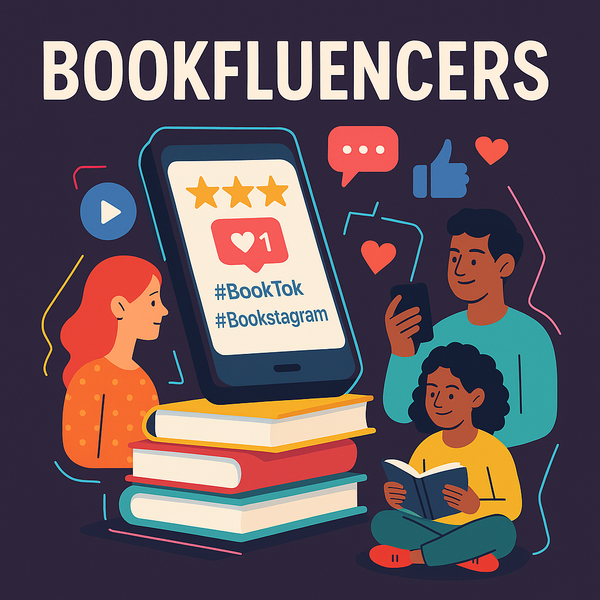How to Write a Book for Beginners

Picture this: you have been dreaming for years of writing a book and telling your story, but you simply did not know where to start? Countless stories burning inside you, messages to tell to the entire world, but the beginning is hard? Putting your words on paper might seem difficult or overwhelming, but with a plan and guidance, anyone can become a writer and publish their first book, even if you haven't done it before.
In this article, we’ll show you how to create the first draft of your manuscript with easy steps, starting from the idea to the final version. Fiction, nonfiction, this guide will help you create your own roadmap for more clarity, more confidence and excitement.
- Start with a Clear Idea
Every story begins with an idea, a thought, a feeling. That doesn’t have to be perfect, but it needs to represent something that keeps you thinking, wondering, a place for continuous inspiration.
Start with some questions and dig deeper:
- What subject, story or topic makes me excited?
- Who are the people I relate to? Who would read my book?
- What emotions and feelings do I want to transmit to my readers? What would they learn, experience?
Answer truthfully these questions and start by writing them down. The decisions you are going to make start exactly from the beginning, from this foundation. Having a clear vision in your mind will guide you through your entire literary journey.
Tip: Start from the unpolished idea, work on it as you go, don’t wait for the perfect time, for the perfect words. Create from where you are and evolve gradually.
- Define Your Genre and Audience
Understanding your genre (e.g. romance, self-help, fantasy, memoir) helps you understand the expectations readers have. Moreover, knowing your audience shapes how you write, your tone, language, length, and even the structure.
If you're writing a guide for young entrepreneurs, your tone might be motivational and practical. If you're writing a cozy mystery, you’ll focus more on building tension and quirky characters.
A target audience or “target market” is a group of consumers( readers in this case) who are most likely to need whatever it is you are selling(writing in this case). These people are a perfect fit for your business(book). They have the problem that your service or product addresses and are looking to buy.
Knowing your target market means you can tailor your words, messages and writing strategies to suit that specific group and connect to them better.
- Outline Your Book
Outlining comes in really handy when you want to avoid getting stuck midway and offers you a clear writing direction. It’s a plan you create, where you can always go back to.
Here’s how you can create such an outline:
- Divide your book into the beginning, middle, and end.
- Split each section into chapters or subchapters
- For every chapter, summarize the main point, action or event.
The outline is the structure of your book, it holds in place the main points and helps you define what you want to do with the book and how you plan to achieve that. If we were to picture an image for this it would be a roadmap. You can always take detours, but you’ll know where you’re headed.
Tip: Don’t be afraid to make changes. The outline is a flexible tool, that you can bend how you please. The important thing is to know to adapt it to fit your purpose entirely.
- Set a Writing Schedule
Consistency, consistency, consistency. We’ve all heard countless times of the importance of consistency when achieving your goals and the truth is.. It’s true. Having a proper schedule and shaping a beneficial routine for your writing will help you create more and reach your goals. Will you keep every piece you’ve written? Probably,not, but you will have the option to choose from. One of the biggest mistakes a writer can make is to discontinue the process and just let things be.
Here’s how you can start:
- Decide upon timing. When do you plan to write? (Mornings, evenings, weekends?)
- Set up a numerical value. Aim for 300 words/day or 30 min of daily writing.
- Set realistic and tangible objectives and really decide what you want to achieve
If you like challenges, you can create your own ‘’30 days, 30 minutes of writing/day’’ or you can also join some. (PubliWrite has a built-in Consecutive 90 Days Writing Goal - that could be a great starting point for you)
Tip: Don’t wait for that magical, divine inspiration. Simply write anything that comes to your mind. Build a habit and create momentum.
Tip: Writing about something totally different than what you initially planned can boost creativity and unlock your potential and inspiration.
- Write Your First Draft (and Don’t Edit Yet!)
When writing your first draft, your only job is to get the words down. Don’t worry if it’s not perfect or clean. Expect it to be messy and embrace it. Don’t overthink your sentences. Leave the fixing for later. You need to focus solely on writing as much as you can in this step. You’ll have time to go back and revise.
The first draft is just you telling yourself the story.
You’ll have time to improve it later. For now, focus on momentum. Keep writing, even if it feels imperfect.
- Revise and Edit
As soon as your first draft is complete... congratulations! You’re closer than you think and you’ve already achieved more than most people ever will. Now it’s time to shape it into something polished.
Think about the big picture and revise it
- Does the structure make sense?
- Are there parts that drag or feel unclear?
- Are your ideas consistent and complete?
Then, move on to the details:
- Sentence flow
- Grammar and spelling
- Dialogue, pacing, and transitions
Editing takes time and that’s ok. All great things take time. Some writers go through 2–4 rounds. That’s totally normal.
You can also invite people to give you honest feedback and analyze your draft.
Tip: You can also create a set of questions for your beta readers to understand better what’s working and what’s not. Ask them all the questions you need: how did they feel when reading a certain part? What would they like to add? What feels too much?
- Decide How You’ll Publish
Once your book is edited and ready, you’ll choose how to publish it:
Traditional publishing involves querying agents or publishers. It can be competitive and slow, but some authors prefer this route.
Self-publishing gives you control over the process, timeline, and royalties. It’s more accessible than ever and increasingly respected.
For beginners, self-publishing is often the best way to get started, especially with the right tools and support.
- Keep Learning and Growing
Writing your first book is a big accomplishment, but it’s also just the beginning. The more you write, the better you’ll get. Keep reading, keep writing, and stay open to feedback.
Connect with other writers. Share your journey. Be proud of your progress.
Remember: Every successful author started as a beginner. You’re on the right path.
A Place for Aspiring Authors: Welcome to PubliWrite
If you’re ready to take your book seriously,whether you’re still outlining or already editing, PubliWrite is here to help.
At PubliWrite, we’re building a community where self-published authors can grow, get support, and succeed. We offer:
- Publishing tools designed for first-time authors
- Promotion programs to help your book reach more readers
- Constant support to ask questions, share your wins, and find motivation
You're not just writing a book, you're starting a journey. And you don’t have to do it alone.
Ready to join a community that supports your writing dream? Visit PubliWrite.com and take your first step today.





